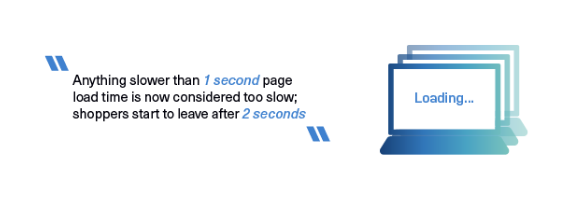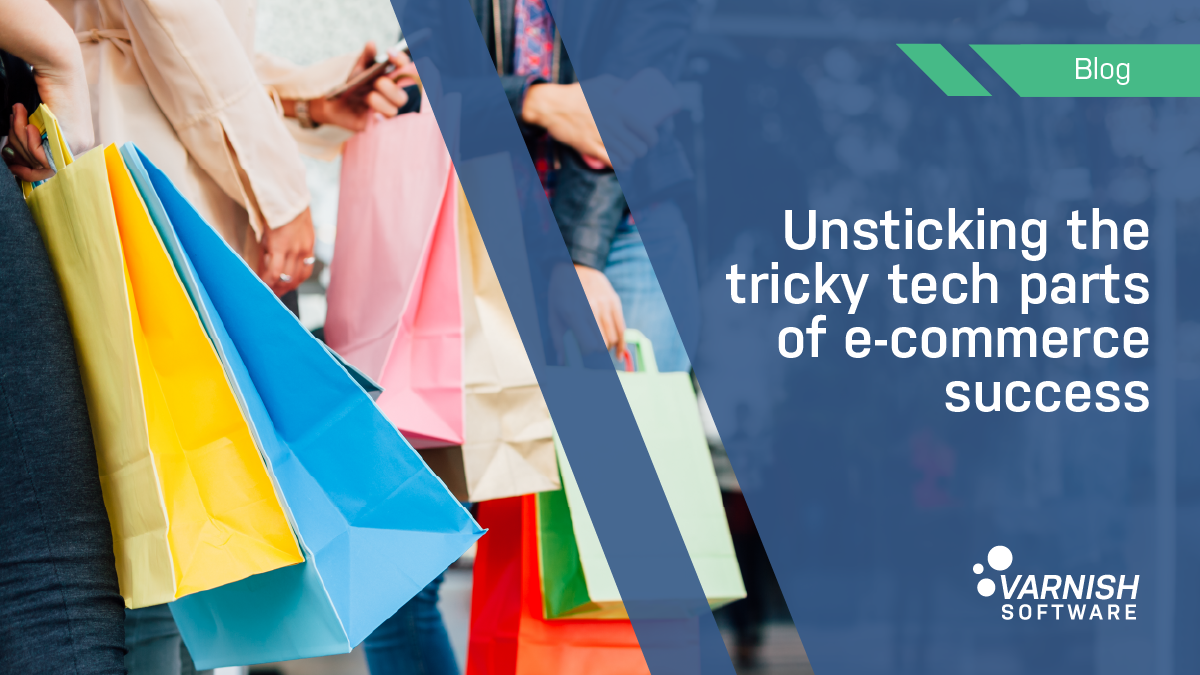Getting online shoppers to turn into active purchasers is a process. One of the often overlooked parts of making the customer journey flow is the technology powering e-commerce performance. Consider everything from speeding up page load times to ensuring that sites and apps remain available even during traffic peaks. Or updating inventory availability and product information and serving personalized recommendations and content to individual users. How can these challenges be tackled to ensure e-commerce success for retailers and smooth user experiences that make customers want to return?
Getting the basics right: Speed and page load time matter

It’s always been true that a website or app needs to be fast for consumers to stick around. They promise to (and do) navigate away if a page load is perceived as slow, with “slow” being defined as anything slower than one second. Speed and convenience are the name of the game, and consumers won’t play if their experience isn’t responsive and satisfying.
Whether the Covid crisis has graced consumers with a bit more patience (as exponentially more people are trying to shop online and queue systems have become the norm) isn’t clear, but it’s still essential to get the basics right to ensure the best possible online shopping experience in normal or peak conditions. Up to 70% of consumers claim they will be unlikely to make a purchase from a site with slow page load speeds. Akamai data shows that when a mobile site's load time increases from one to three seconds, conversion rates halve, and bounce rates increase by 6%.
Smart caching and cache invalidation along with high availability features will help ensure fast page loads, high-performance content delivery and uptime at any scale.
A performance bungie cord: Bouncing through peaks and valleys without crashing
Part of ensuring uptime is making sure that there’s sufficient capacity to meet unpredictable traffic peaks and demand, scaling up automatically. Here’s where the elasticity of cloud technology comes into play. It’s easy and almost instant to set up extra cloud caching nodes to handle peaks (and take them down when traffic returns to normal).
Caching the uncacheable: Dynamic and personalized content
E-commerce is marked by an exceptional amount of dynamic content and personalization. Historically these kinds of content have slowed down performance, often because e-commerce platforms, like Magento, are not set up to cache dynamic content. With e-commerce acceleration, it’s possible to cache the uncacheable, reducing backend operational costs and boosting site performance -- all without making changes to the e-commerce platform’s backend itself.
Optimizing for a seamless end-to-end mobile shopping experience
.png?width=573&name=2Asset%205blog2%20(1).png)
Mobile shopping is driving growth; a demarcation between desktop and mobile shopping isn’t really necessary any longer except to highlight that consumers bring the same high expectations to mobile as to desktop, and different considerations and technologies are still at work here. A number of mobile-friendly technologies help optimize the online shopping experience on mobile. Varnish offers technologies that help speed up page rendering and page loads (by up to 100x), and is also 5G-ready. 5G is poised to alter the shape of e-commerce, enabling ultra-low-latency shopping and transactions and transformative, immersive shopping experiences.
Understanding performance and behavioral data
Data -- the more granular the better -- is one of the most powerful ways retailers can understand what their customers are doing. Do customers leave a site because pages are loading slowly? Why do they abandon full shopping carts? These aren’t just curiosities: abandoned full shopping carts cost retailers trillions (yes, trillions) in 2016. Both technical site-performance and user behavior data provide indications of what a retailer is doing right and wrong, but the picture isn’t complete without both.
Augmenting behavioral analytics with real-time logs and performance data about page load speeds and mobile device detection can lead to more complete insight into what shoppers are doing and their behaviors versus the behaviors of the underlying tech.
Anticipating future demand and technology
Whether technology innovation itself powers e-commerce development, or consumers’ adoption of (or willingness to try) new technology drives online shopping forward, there’s no shortage of changes underway that promise a more integrated, immersive and personal shopping experience, with voice shopping, AR and VR-augmented shopping and bespoke services, various opportunities for video and personalization at a new level -- all of it delivered faster than ever thanks to 5G network availability and the new possibilities it creates.
If you’d like to find out more about the tech tricks and solutions that can help your e-commerce performance, contact us or read our Black Friday guide (its principles apply at peak times like Black Friday as well as any other time of the year).
/VS-logo-2020-197x60.png?width=136&height=60&name=VS-logo-2020-197x60.png)

